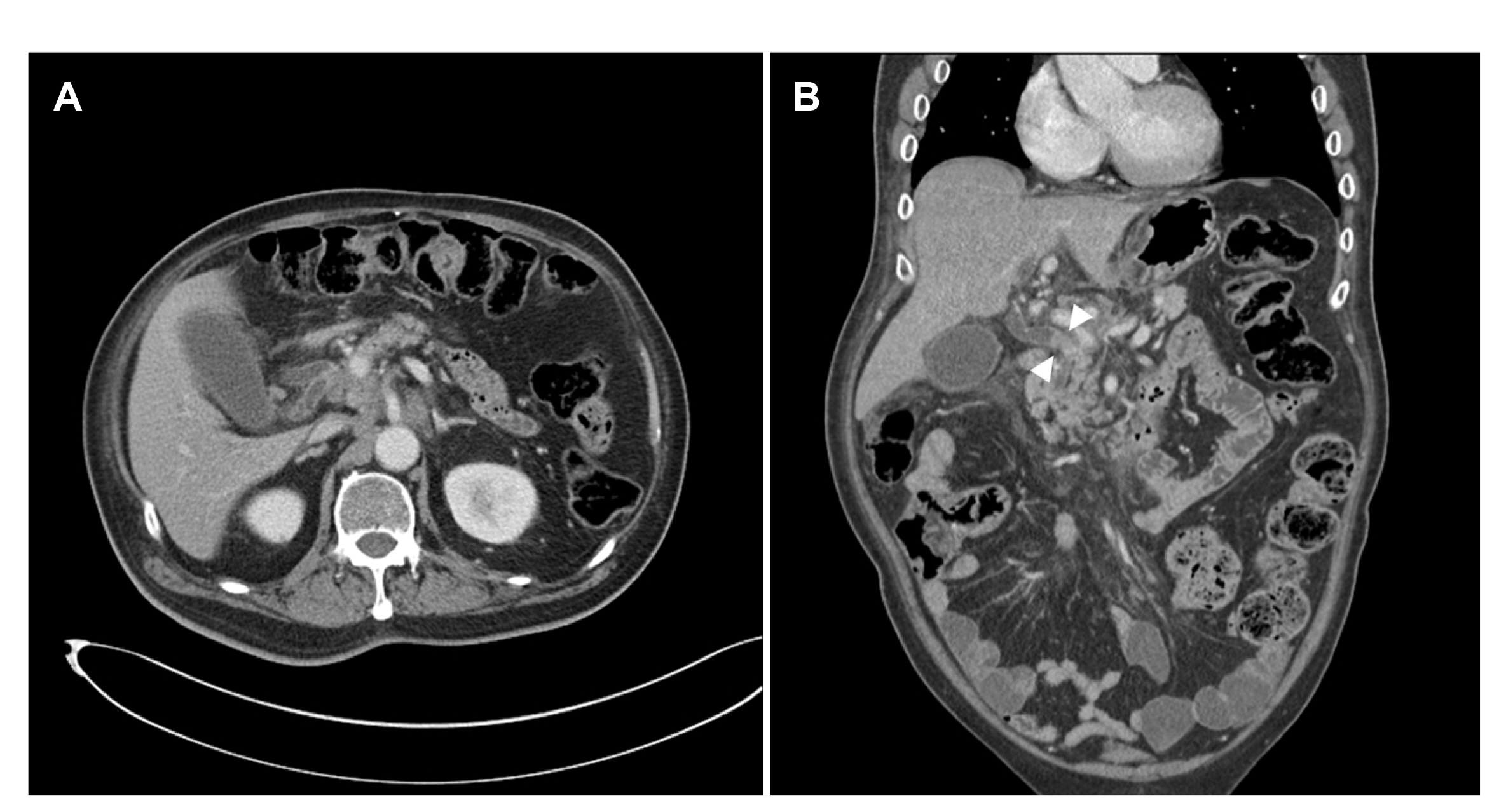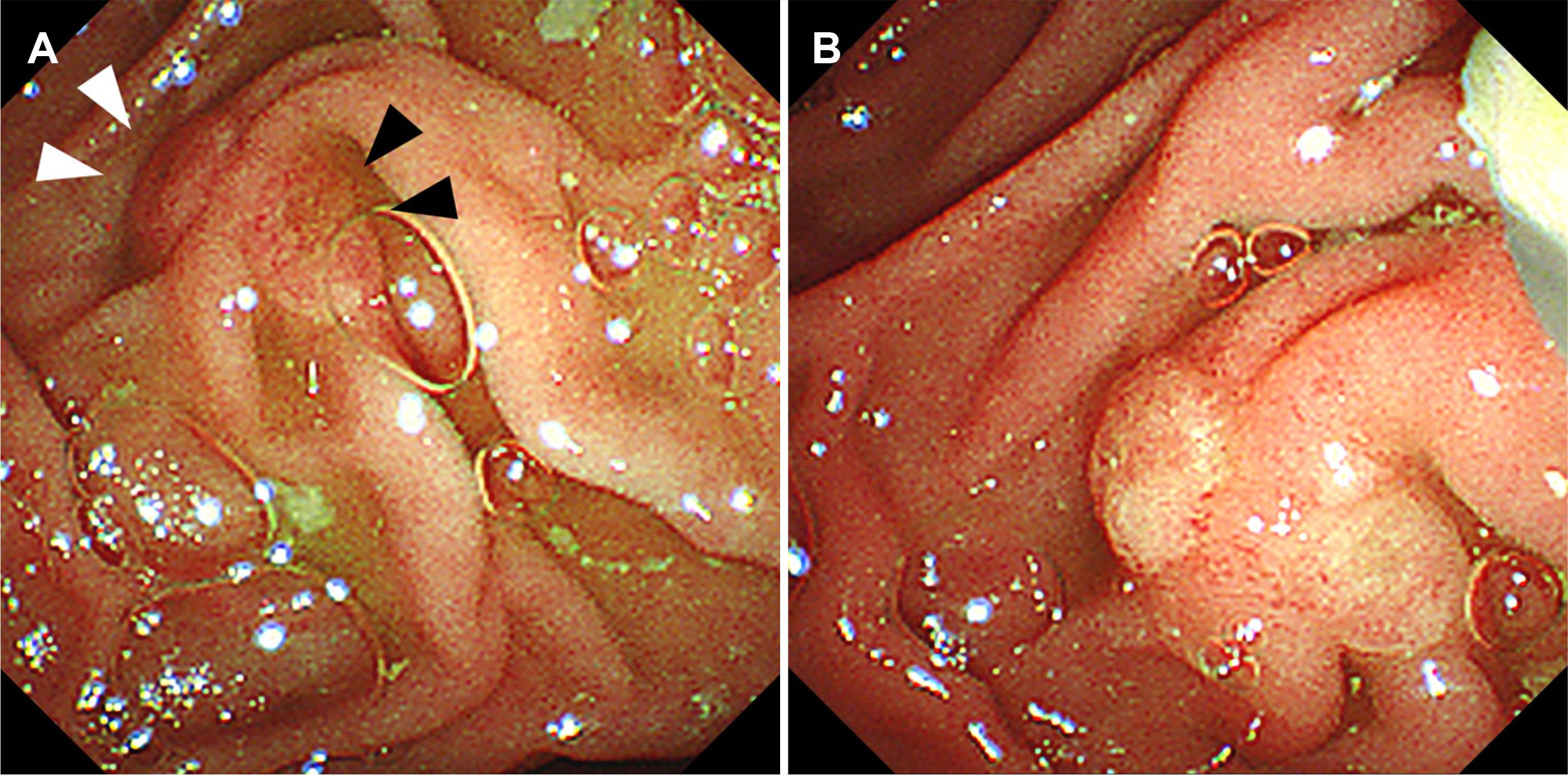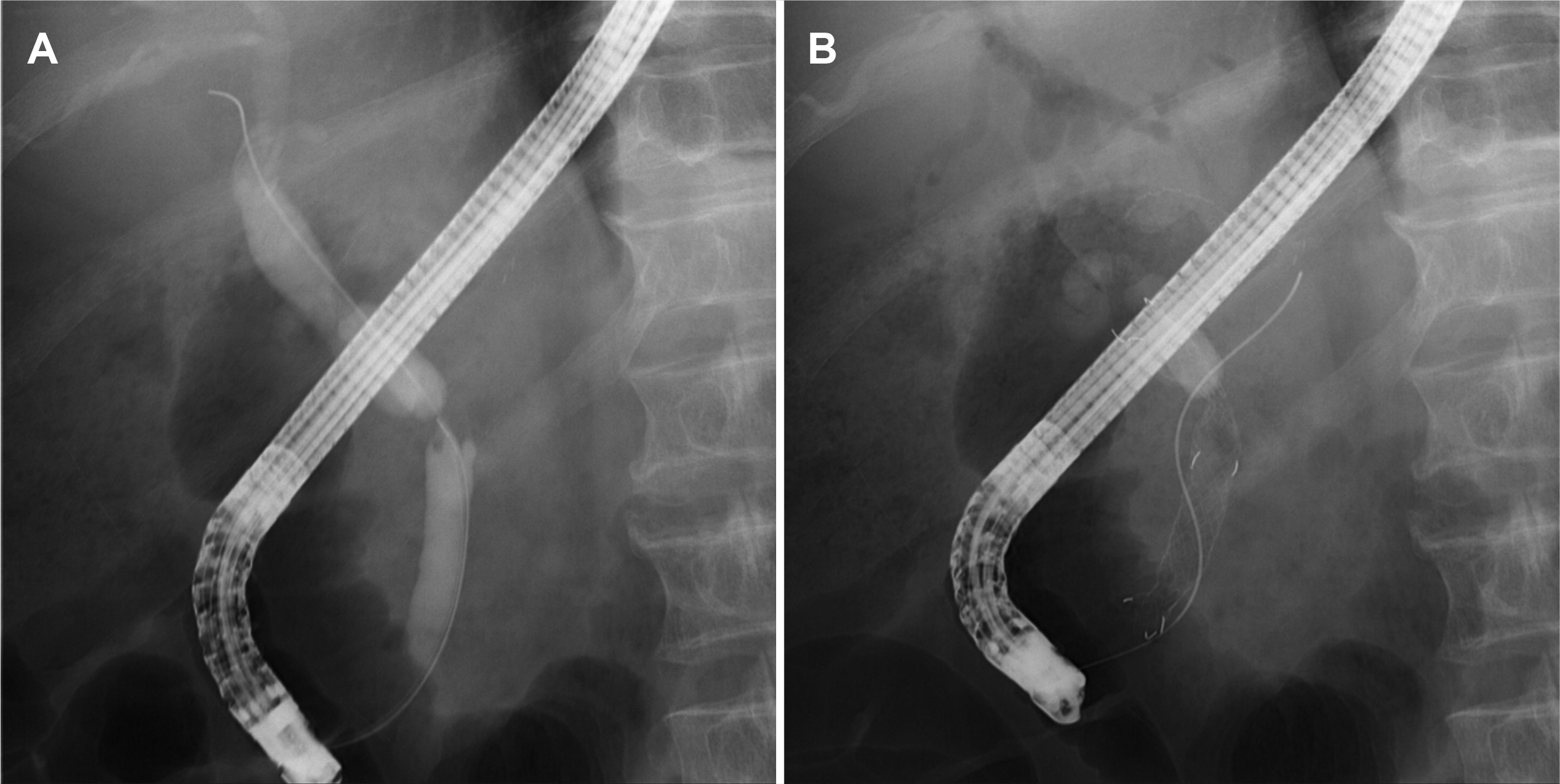Korean J Gastroenterol.
2021 Dec;78(6):359-361. 10.4166/kjg.2021.162.
Double Duodenal Major Papilla
- Affiliations
-
- 1Division of Gastroenterology, Department of Internal Medicine, Gil Medical Center, Gachon University College of Medicine, Incheon, Korea
- KMID: 2523599
- DOI: http://doi.org/10.4166/kjg.2021.162
Abstract
- no abstract available.
Figure
Reference
-
1. Kothadia JP, Kone V, Raza A. 2018; Double major duodenal papillae: a rare congenital anomaly of hepatic and pancreatic drainage system. Clin Gastroenterol Hepatol. 16:A39–A40. DOI: 10.1016/j.cgh.2017.09.053. PMID: 29421157.2. Simon MA, Moreira VF, Meroño E, Seara JF, del Olmo L. 1985; The double papilla of Vater. Gastrointest Endosc. 31:353–354. DOI: 10.1016/S0016-5107(85)72231-6. PMID: 4043695.
Article3. Chavalitdhamrong D, Draganov PV. 2014; Unexpected anomaly of the common bile duct and pancreatic duct. World J Clin Cases. 2:36–38. DOI: 10.12998/wjcc.v2.i2.36. PMID: 24579069. PMCID: PMC3936217.
Article4. Wu MB, Zhang WF, Zhang YL, Mu D, Gong JP. 2015; Choledochoduodenal fistula in Mainland China: a review of epidemiology, etiology, diagnosis and management. Ann Surg Treat Res. 89:240–246. DOI: 10.4174/astr.2015.89.5.240. PMID: 26576403. PMCID: PMC4644904.
Article5. Culver EL, Booth JC. 2016; Choosing the correct path: the double orifice papilla. Gastrointest Endosc. 84:378–379. DOI: 10.1016/j.gie.2016.01.009. PMID: 26775766.
Article6. Francis JM, Kadakia SC. 1994; Anomalous double orifice of a single major papilla of Vater. Gastrointest Endosc. 40:524–525. DOI: 10.1016/S0016-5107(94)70237-3. PMID: 7926559.
Article7. Joo KR, Shin HP, Kim HJ, Cha JM, Park JB, Lee JI. 2007; Two cases of double papilla of Vater. Clin Endosc. 34:170–173.
- Full Text Links
- Actions
-
Cited
- CITED
-
- Close
- Share
- Similar articles
-
- Endoscopic Papillectomy for Synchronous Major and Minor Duodenal Papilla Neuroendocrine Tumors
- The Double Papilla of Vater
- A Large Neuroendocrine Tumor of the Major Duodenal Papilla Removed by Endoscopic Papillectomy
- Primary Adenocarcinoma of the Minor Duodenal Papilla
- Two Cases of Double Papilla of Vater





